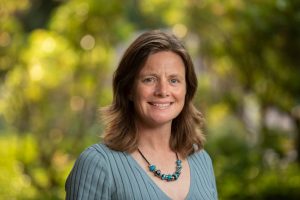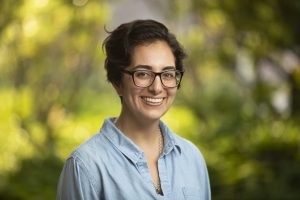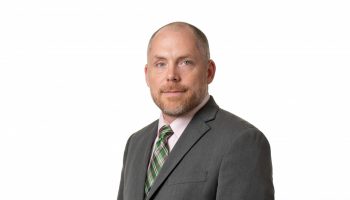
Though founded in 1888, National Geographic Society has experienced some major “firsts” in 2019.
Launched earlier this year, Sea to Source: Ganges Plastics Expedition became the first in a series of expeditions planned as part of National Geographic’s Planet or Plastic? initiative, and the largest all-female led expedition in National Geographic history.
Co-led by National Geographic Fellows Heather Koldewey and Jenna Jambeck, the Sea to Source: Ganges team endeavored to collect plastics data along the Ganges River — from the Bay of Bengal to India’s western Himalayas — in June for the pre-monsoon season phase of research. The expedition team was divided into three groups, focused on land, water and people, and comprised of partners in India and Bangladesh, as well as National Geographic Explorers, including multimedia journalist Lillygol Sedaghat.
Koldewey and Sedaghat will deliver the morning lecture at 10:45 a.m. today, July 12, in the Amphitheater, as part of Week Three, “A Planet in Balance: A Week in Partnership with National Geographic Society.”
“Heather and Lilly’s work on plastic pollution demonstrates the power of research and storytelling — and partnership — in providing a holistic view of a problem, raising awareness, sparking conversation and driving solutions,” said Matt Ewalt, vice president and Emily and Richard Smucker Chair for Education.
Koldewey and Sedaghat plan on discussing the Sea to Source: Ganges expedition and the broader context of ocean plastics; relationships between plastic, people and poverty; and storytelling as an agent of change.
The Ganges is among the world’s top rivers contributing to ocean plastic pollution, Koldewey said. But data describing plastic pollution has mostly been based on models, examining variables like population size and waste management infrastructure — until now.
“What we wanted to do was to look at some empirical measurements, on-the- ground measurements,” Koldewey said. “Understanding the source, the load and the type of plastics going into a river like the Ganges, is really going to enable us to unlock solutions.”
Currently the Zoological Society of London’s senior technical adviser, Koldewey said she has followed a “meandering path” throughout her career, first joining the ZSL in 1995, and filling various roles since. With collaboration and conservation at the core of Koldewey’s work, she has helped launch OneLess, a movement that asks, “What would it take to make London a city free of single-use plastic water bottles?” And in 2012, she developed Net-Works, which has created a new supply chain for discarded fishing nets to be recycled into nylon yarn for carpet and clothing.

“Since we’ve set up (Net-Works), we’ve managed to collect and export over 200 metric tons of nets; and to visualize that, that’s enough to go around the world five times with functional fishing nets,” Koldewey said. “In all cases, my work is very much focused on looking at solutions.”
This type of solutions-minded work, Koldewey said, will hopefully carry over into the second phase of Sea to Source: Ganges, which will commence in October when monsoon season ends. Until then, “there’s a lot of work to be done,” and the team will be analyzing data and preparing for the next phase.
“We’re looking at the next expedition to be the changemaker expedition — where we look at how we can support our local partners in India and Bangladesh, and set them up for success, find solutions and implement those,” Koldewey said. “I think there is inspiration everywhere, and that’s what gives me hope. … There’s so many people working hard and trying to make a difference — that’s in all aspects of society. And that, I find very motivational.”
During the expedition’s first phase, which began on the ground in Bangladesh in early May, Sedaghat had two roles. She tracked riverbank waste as part of the land team, and she documented Sea to Source: Ganges for National Geographic’s Open Explorer platform, Instagram and National Geographic Society.
Sedaghat’s latter responsibility acts as a bridge between non-scientists and scientists; science and art; and people of different communities and cultures.




